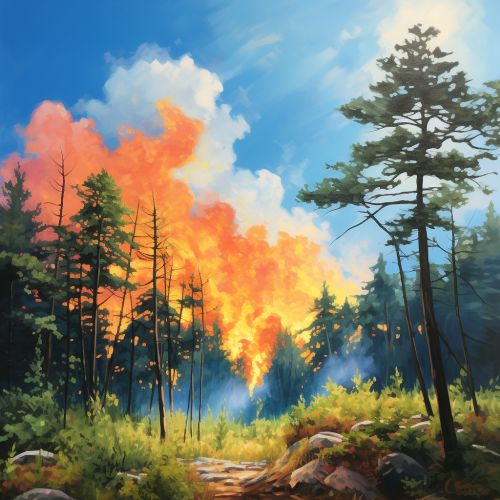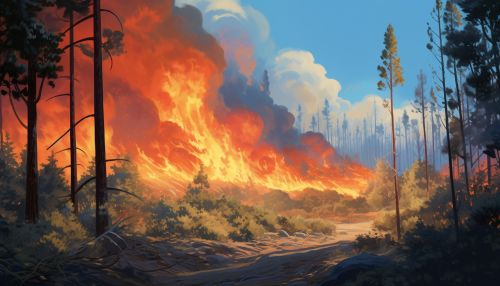Wildfire Modeling
Introduction
Wildfire modeling is a branch of fire science that focuses on the simulation and prediction of wildfires. This scientific discipline employs mathematical models and computer algorithms to understand and predict the behavior of wildfires. The goal of wildfire modeling is to aid in wildfire management, prevention, and control.
History
The history of wildfire modeling dates back to the mid-20th century, when the first mathematical models of fire spread were developed. In the 1960s, Richard Rothermel, a researcher at the U.S. Forest Service, developed the first comprehensive mathematical model for predicting the spread of wildfires. This model, known as the Rothermel fire spread model, is still widely used today.
Types of Wildfire Models
There are several types of wildfire models, each with its own strengths and weaknesses. These include empirical models, physical models, and hybrid models.
Empirical Models
Empirical models are based on statistical analysis of past wildfire behavior. These models use historical data to predict future fire behavior. The Rothermel model is an example of an empirical model.
Physical Models
Physical models are based on the physical properties and processes of fire. These models use equations derived from the laws of physics to simulate fire behavior. The BEHAVE system and the Fire Dynamics Simulator (FDS) are examples of physical models.
Hybrid Models
Hybrid models combine elements of both empirical and physical models. These models use a combination of historical data and physical equations to predict fire behavior. The FARSITE simulator is an example of a hybrid model.
Principles of Wildfire Modeling
Wildfire modeling is based on several key principles. These include the fuel model, the weather model, and the topography model.
Fuel Model
The fuel model describes the types and quantities of fuel available for a fire. This includes vegetation, dead wood, and other combustible materials. The fuel model is critical for predicting the rate of fire spread and the intensity of the fire.
Weather Model
The weather model describes the current and forecasted weather conditions. This includes temperature, humidity, wind speed, and wind direction. The weather model is important for predicting fire behavior and fire spread.
Topography Model
The topography model describes the physical features of the landscape. This includes the slope, aspect, and elevation of the terrain. The topography model is crucial for predicting the direction and rate of fire spread.
Applications of Wildfire Modeling
Wildfire modeling has a wide range of applications. These include fire management, fire prevention, and fire research.
Fire Management
Wildfire models are used in fire management to predict the behavior of ongoing fires. This helps fire managers make informed decisions about firefighting strategies and resource allocation.
Fire Prevention
Wildfire models are used in fire prevention to identify areas at high risk of wildfire. This helps land managers implement preventative measures, such as controlled burns and fuel reduction.
Fire Research
Wildfire models are used in fire research to study the behavior and effects of wildfires. This helps scientists understand the ecological impacts of fire and develop new methods for fire management and prevention.
Challenges and Future Directions
Despite advances in wildfire modeling, there are still many challenges to overcome. These include the need for more accurate models, the integration of different types of models, and the development of real-time models.
The future of wildfire modeling lies in the development of more sophisticated models that can accurately predict the behavior of complex, large-scale fires. This will require advances in computational power, as well as improvements in our understanding of fire behavior and fire ecology.


